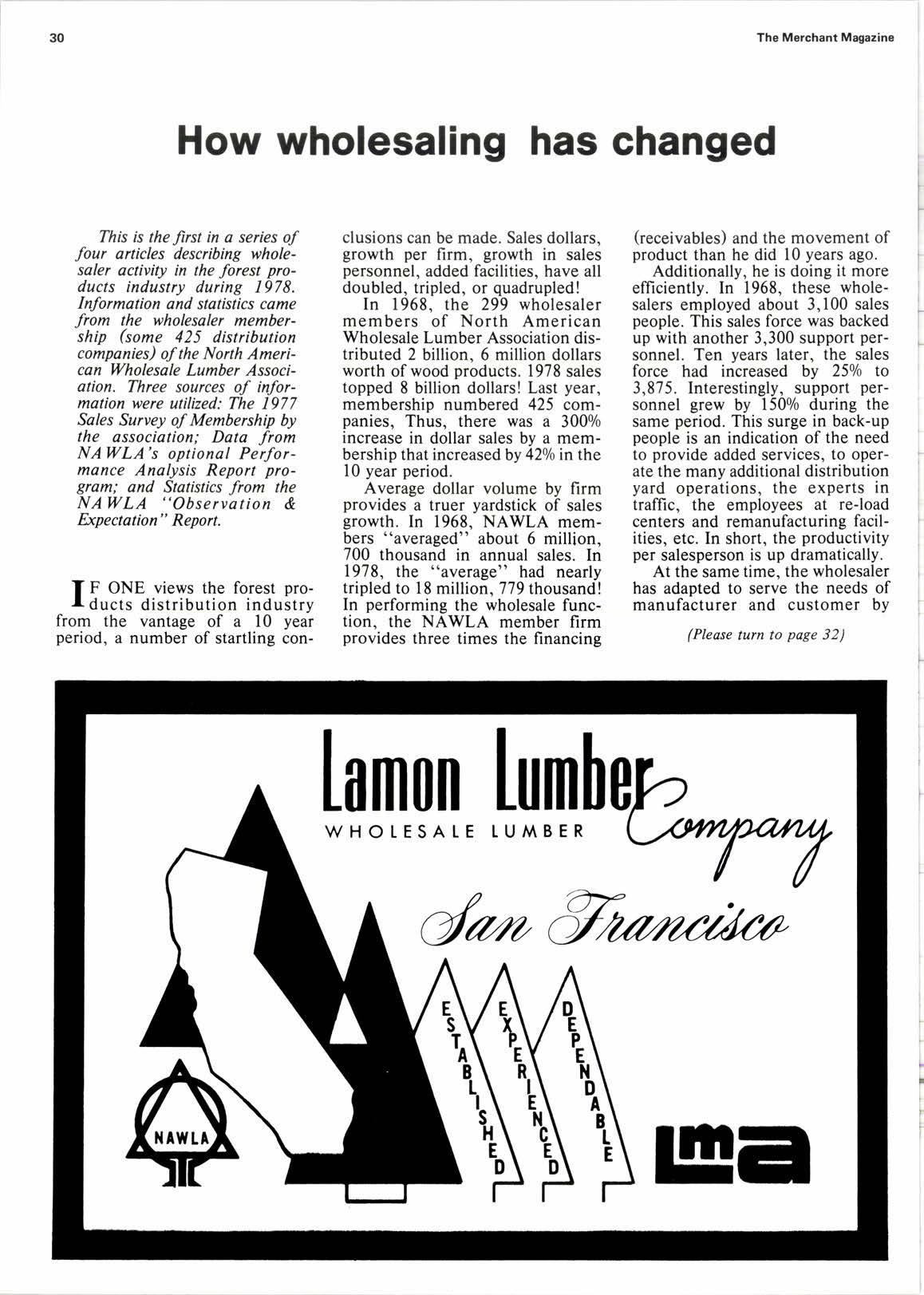
2 minute read
How wholesaling has changed
This is the Jirst in a series of four articles describing wholesaler activity in the forest products industry during 1978. Information and statistics came from the wholesaler membership (some 425 distibution companies) of the North American ll/holesale Lumber Association. Three sources of information were utilized: The 1977 Sales Survey of Membership by the association; Data from NAWLA's optional Performance Analysis Report program; and Statistics from the NAWLA "Observation & Expectation" Report.
f F ONE views the forest pro- r ducts distribution industry from the vantage of a l0 year period, a number of startling con- clusions can be made. Sales dollars. growth per firm, growth in sales personnel, added facilities, have all doubled, tripled, or quadrupled!
In 1968, the 299 wholesaler members of North American Wholesale Lumber Association distributed 2 billion, 6 million dollars worth of wood products. 1978 sales topped 8 billion dollars! Last year, membership numbered 425 companies, Thus, there was a 3000/o increase in dollar sales by a membership that increased by 420lo in the l0 year period.
Average dollar volume by firm provides a truer yardstick of sales growth. In 1968, NAWLA members "averaged" about 6 million, 700 thousand in annual sales. In 1978, the "average" had nearly tripled to l8 million, 779 thousand! In performing the wholesale function. the NAWLA member firm provides three times the flrnancing
(receivables) and the movement of product than he did 10 years ago.
Additionally, he is doing it more efficiently. In 1968, these wholesalers employed about 3,100 sales people. This sales force was backed up with another 3,300 support personnel. Ten years later, the sales force had increased by 250/o to 3,875. Interestingly, support personnel grew by l50o/o during the same period. This surge in back-up people is an indication of the need to provide added services, to operate the many additional distribution yard operations, the experts in traffic, the employees at re-load centers and remanufacturing facilities, etc. In short, the productivity per salesperson is up dramatically.
At the same time, the wholesaler has adapted to serve the needs of manufacturer and customer by
(Please turn to page 32)

Wholesaling Changes
(Continued from page 30) adding a substantial number of auxiliary employees.

They have added facilities as well. In just the past three years alone, there have been 52 new distribution centers established bv these independent wholesalers. Today, 221 NAWLA wholesale companies operate 400 distribution yards. Almost 200/o of the membership has remanufacturing capabil- ities and two-thirds of these were developed since 1975.
Running counter to this eyecatching change in wholesale dis- tribution is the aparent fact that customer mix has been relativelv stable since 1972: trend among NAWLA wholesale firms to market hardwood products.
Thus, today's wholesaler meets change where and when it is needed. He capably provides investment and financing to the industry. He sees that the product gets to the right place at the right time in the most economical manner.
A substantial portion of NAWLA wholesaler sales to industrial customers are to furniture manufacturers. In turn, these sales basically involve hardwood lumber. There is a definite
Our second article in this series will examine the assets needed by and provided by today's wholesaler offorest products.










